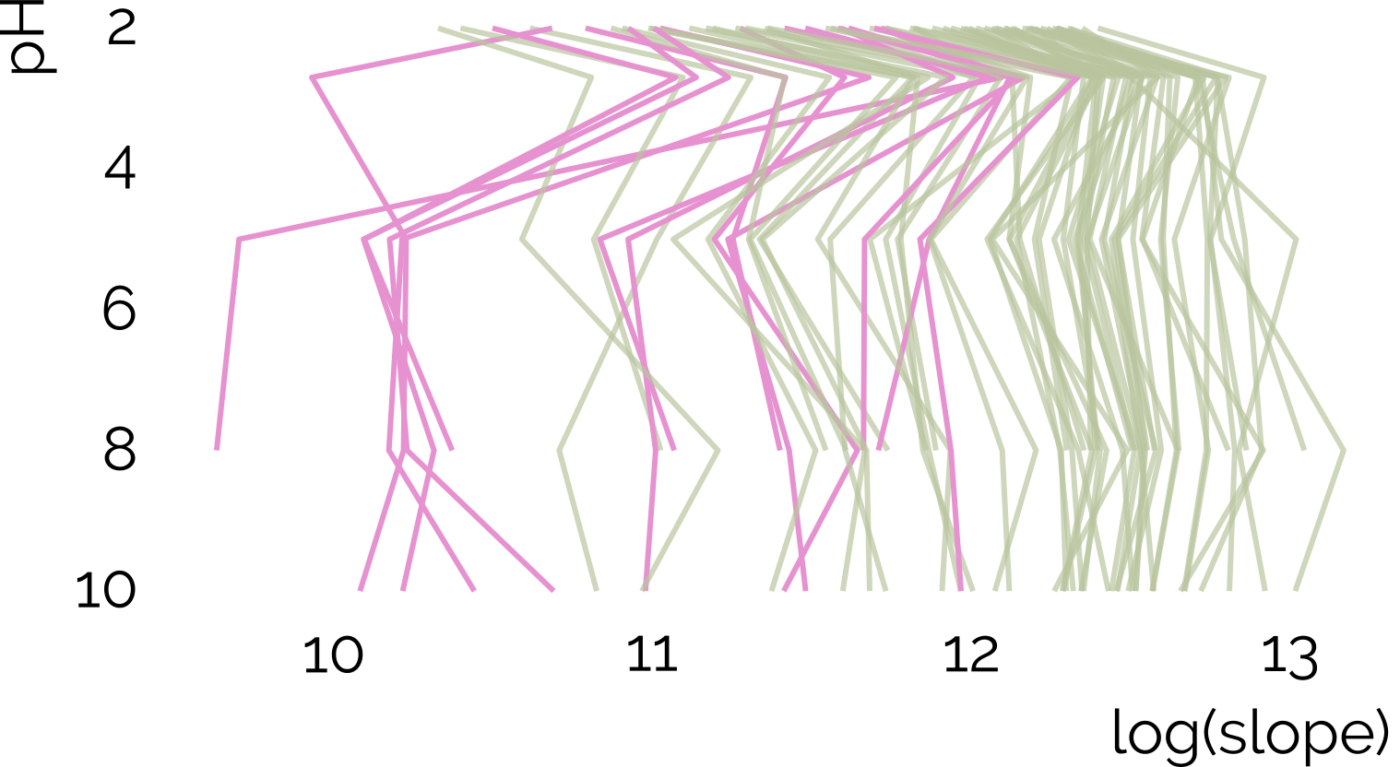Recently Amina Souihi in our group investigated the impact of mobile phase composition on the detection of various chemicals with non-target screening in wastewater.
If you are using liquid chromatography (LC) coupled to mass spectrometry (MS) you have probably noticed that it is not equally easy to detect all chemicals. This arises from the fact that different chemicals ionize to a very different extent in the electrospray, mostly used to connect the LC and MS. Previous studies by us and others have shown that the ionization efficiency of chemicals depends not only on their own properties (Oss et al. and Liigand et al.) but also on the mobile phase, with the difference reaching 1000x.
So how to choose a mobile phase for your LC/MS experiments? Obviously, one needs to optimize it. However, this becomes challenging in the case of non-target screening (NTS). Firstly, in NTS the chemicals present in the sample are unknown. Secondly, the analysis is usually performed with gradient elution and the exact mobile phase composition depends on the retention time of the analyte.
In order to discover overarching trends and choose a mobile phase providing the best sensitivity for a wide range of chemicals Amina investigated the LC/MS analysis sensitivity for 45 mobile phases and chromatographic column combinations, including reversed-phase (normal, mixed-mode, and phenyl) as well as HILIC. The mobile phases varied in organic modifier (MeCN vs MeOH), pH (2.10 to 10.00), and buffer modifier. Overall, acidic mobile phases provided a clearly superior sensitivity for the analysis in positive mode.
To evaluate the transferability of these findings to NTS, Amina evaluated three mobile phases for wastewater analysis. A similar trend was observed with 0.1% formic acid and MeCN providing the highest number of detected features as well as the highest number with MS2 spectra triggered with top5 experiments. In addition, the performance in terms of features with MS2 spectra was significantly improved by using dynamic exclusion. Dynamic exclusion reduces triggering MS2 experiments for the same parent ion and thereby enables obtaining more MS2 spectra for different features. This becomes very important for analysis where high noise levels may be present.


